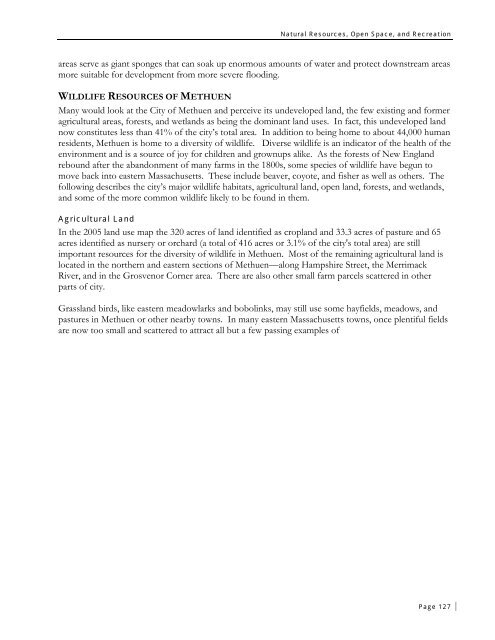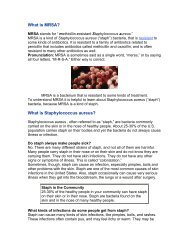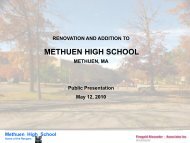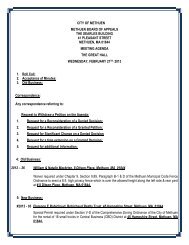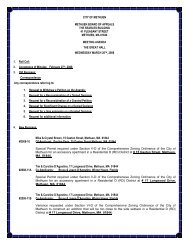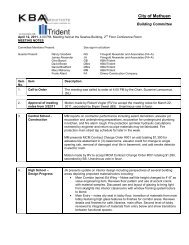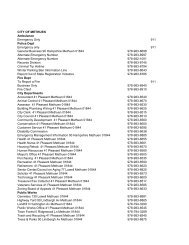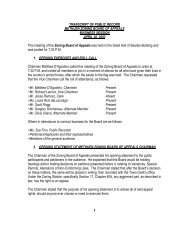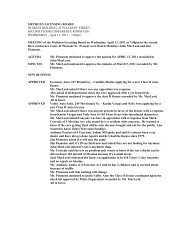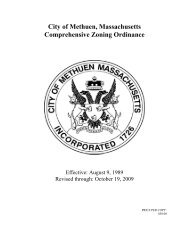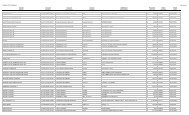City of Methuen Master Plan
City of Methuen Master Plan
City of Methuen Master Plan
You also want an ePaper? Increase the reach of your titles
YUMPU automatically turns print PDFs into web optimized ePapers that Google loves.
Natural Resources, Open Space, and Recreation<br />
areas serve as giant sponges that can soak up enormous amounts <strong>of</strong> water and protect downstream areas<br />
more suitable for development from more severe flooding.<br />
WILDLIFE RESOURCES OF METHUEN<br />
Many would look at the <strong>City</strong> <strong>of</strong> <strong>Methuen</strong> and perceive its undeveloped land, the few existing and former<br />
agricultural areas, forests, and wetlands as being the dominant land uses. In fact, this undeveloped land<br />
now constitutes less than 41% <strong>of</strong> the city’s total area. In addition to being home to about 44,000 human<br />
residents, <strong>Methuen</strong> is home to a diversity <strong>of</strong> wildlife. Diverse wildlife is an indicator <strong>of</strong> the health <strong>of</strong> the<br />
environment and is a source <strong>of</strong> joy for children and grownups alike. As the forests <strong>of</strong> New England<br />
rebound after the abandonment <strong>of</strong> many farms in the 1800s, some species <strong>of</strong> wildlife have begun to<br />
move back into eastern Massachusetts. These include beaver, coyote, and fisher as well as others. The<br />
following describes the city’s major wildlife habitats, agricultural land, open land, forests, and wetlands,<br />
and some <strong>of</strong> the more common wildlife likely to be found in them.<br />
Agricultural Land<br />
In the 2005 land use map the 320 acres <strong>of</strong> land identified as cropland and 33.3 acres <strong>of</strong> pasture and 65<br />
acres identified as nursery or orchard (a total <strong>of</strong> 416 acres or 3.1% <strong>of</strong> the city's total area) are still<br />
important resources for the diversity <strong>of</strong> wildlife in <strong>Methuen</strong>. Most <strong>of</strong> the remaining agricultural land is<br />
located in the northern and eastern sections <strong>of</strong> <strong>Methuen</strong>—along Hampshire Street, the Merrimack<br />
River, and in the Grosvenor Corner area. There are also other small farm parcels scattered in other<br />
parts <strong>of</strong> city.<br />
Grassland birds, like eastern meadowlarks and bobolinks, may still use some hayfields, meadows, and<br />
pastures in <strong>Methuen</strong> or other nearby towns. In many eastern Massachusetts towns, once plentiful fields<br />
are now too small and scattered to attract all but a few passing examples <strong>of</strong><br />
Page 127


